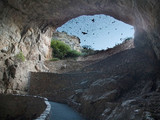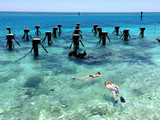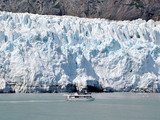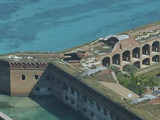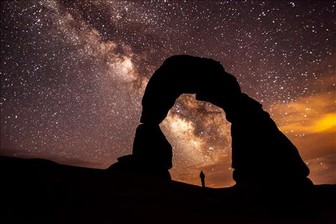Government Grants
Business Grants
Home Owner Programs
Federal Programs
About Us
Bearing Land Bridge Kids APP
This Funding Announcement is not a request for applications.
This announcement is to provide public notice of the National Park Service (NPS), intention to fund the following project activities without competition.
ABSTRACTFunding Announcement P16AC00607 Project Title Bearing Land Bridge Kids APP Recipient University of MarylandTotal Anticipated Award Amount $28,20 0. 00Cost Share $0Anticipated Length of Agreement 11 monthsAnticipated Period of Performance 8/01/16 – 7/31/2017Award Instrument Task AgreementStatutory Authority 54 USC100101CFDA # and Title 1 5. 954Single Source Justification Criteria Cited Point of Contact James CatoOVERVIEWCooperative Agreement Number P14AC00888 STATEMENT OF JOINT OBJECTIVES/PROJECT MANAGEMENT PLANProject Title, Project Description; The objective of this Task Agreement is to for the purpose of co-designing an educational mobile application for kids (3rd – 4th grade) using the UM Kids Design Team.
Bering Land Bridge National Preserve (www.nps.gov/bela) is one of the most remote and isolated park service sites.
It is located 100 miles north of Nome, AK and is most commonly reached via small aircraft.
It is known for its rich history on human migration, geothermal hot springs, volcanic activity, and cultural ties with Alaskan Natives that surround the preserve.
Due to its remote location, it is one of the least visited park service sites in the nation.RECIPIENT INVOLVEMENTCESU agreement # P14AC00888 was entered into by and between the Department of the Interior, National Park Service, (NPS), and the University of Maryland, College Park (UM) for the purpose of co-designing an educational mobile application for kids (3rd – 4th grade) using the UM Kids Design Team.
Bering Land Bridge National Preserve (www.nps.gov/bela) is one of the most remote and isolated park service sites.
It is located 100 miles north of Nome, AK and is most commonly reached via small aircraft.
It is known for its rich history on human migration, geothermal hot springs, volcanic activity, and cultural ties with Alaskan Natives that surround the preserve.
Due to its remote location, it is one of the least visited park service sites in the nation.The preserve engages with a substantial amount of young cyber visitors via the Bering Land Bridge web page, social media sites, the Jr.
Ranger book, and distant learning ranger programs.
While these methods have been well received, the park intends to create a mobile application to expand the availability of digital products for Bering Land Bridge’s young visitor.A digital mobile app would allow children to gain a park-like experience that is unique to mobile devices regardless of their physical location.
Users will gain a sense of place by learning about the ecology, environmental factors, and cultural or natural resources of Bering Land Bridge.
A team of Bering Land Bridge staff, UM Kids Team (this includes both kids and university staff), and developers (to be hired via contracting) will work together to bring the application to fruition.
The UM Kids design team is made up of staff with backgrounds in child development, computer science, interface design and a group of children with training and experience in tech design for young users.
UM brings essential knowledge that will aid in the success, relevancy, and design of the app.Our process entails co-facilitating four sessions with the Kids Design Team, developers, and park staff.
Each session is anteceded by a meeting with park and university staff to set goals and objectives and followed by a debrief to review findings from the session During each session, University of Maryland Kids Team, Bering Land Bridge representatives, and developers will work collaboratively to design the app using participatory design methods as described in Article III.
These sessions are reactive to previous sessions but cycle through ideation, analysis, evaluation and reiteration and result in guiding documents, paper prototypes, and rough digital mock ups (created by the developer) that assists the entire team in making the best decisions for the app that ultimately lead to its creation.The outcome of each of these sessions will include a document with high-level findings related to the design of the app, including 1) a synthesis of common themes, big ideas, and findings that came out of each session, 2) key action points on what was well received and what elements were lacking, 3) and pictures of any design artifacts that came out of the design session to guide the development of the app.
This project shows its commitment to strengthening park service units as places of learning through relevant technologies and collaboration with partners.
It targets Call to Action Goal:
Reach new audiences and maintain a conversation with all Americans by transforming the NPS digital experience to offer rich, interactive, up-to-date content from every park and program.
Furthermore, the University of Maryland, College Park is well positioned to engage with the NPS in the design of the Bering Land Bridge Kids App.
This institution has worked closely with the NPS and a range of other partners from the private and public sector to develop new technologies for and with children.
It also belongs to the congressionally chartered group:
the National Park System Advisory Board Education Committee.
As a pioneer of innovation, the University of Maryland, College Park fully supports the NPS education mission.For performance under this task agreement, the regulations set forth in 2 CFR, Part 200, supersedes OMB Circulars A–21 (2 CFR 220), A–87 (2 CFR 225), A–110, and A–122 (2 CFR 230); Circulars A–89, A–102, and A–133; and the guidance in Circular A–50 on Single Audit Act follow-up.
The recipient shall adhere to 2 CFR, Part 200 in its entirety in addition to any terms and conditions of the master agreement not superseded by 2 CFR 200, as well as the terms and conditions set forth in this agreement.
In the event of a conflict between the original terms of the master agreement and 2 CFR, Part 200, relating to this task agreement, 2 CFR, Part 200 shall take precedence.
ARTICLE II- LEGAL AUTHORITY 1. 54 USC10010 1. Promotion and regulation(a) In General.-The Secretary, acting through the Director of the National Park Service, shall promote and regulate the use of the National Park System by means and measures that conform to the fundamental purpose of the System units, which purpose is to conserve the scenery, natural and historic objects, and wild life in the System units and to provide for the enjoyment of the scenery, natural and historic objects, and wild life in such manner and by such means as will leave them unimpaired for the enjoyment of future generations.ARTICLE III – STATEMENT OF WORK A) University of Maryland agrees to:
1. Cooperate with the Agreement Technician Representative (ATR) to ensure that the conduct of the project complies with the “NPS Interim Guidance Document Governing Code of Conduct, Peer Review, and Information Quality Correction for National Park Service Cultural and Natural Resources Disciplines,” and with any and all subsequent guidance issued by the NPS Director to replace this interim document.
The ATR is the NPS peer review manager for this project.
2. Work closely with the Visual Information Specialist to produce mutually agreed upon timelines, scope, and goals for participatory design sessions.
3. Work towards creating a product for young users that facilitates the understanding of Bering Land Bridge’s ecology, environmental factors, natural processes, and cultural or natural resources.
4. Co-facilitates four participatory design sessions using some or all of the following methodologies:i.
Low-tech prototyping – children and adults collaboratively design new ideas with craft and art supplies.
ii.
Frequency analysis for feedback loops on existing designs where “sticky notes” are used to write children’s likes and dislikes of a design idea or prototype.
iii.
Mixing ideas using large sheets of paper to bring together the ideas of various children and adults who have been brainstorming in smaller groups.
iv.
Journaling or video may be used, depending on the need to archive ideas.
5. Conduct adult debriefing discussions on technology idea outcomes, process insights and suggestions for the developer’s next iteration of the application.
6. Produce a summary on each session including notes, pictures of artifacts from the session, summary of outcomes, or feedback.
Summary of each session should include a synthesis of the recurring ideas, themes and concepts that came out of the design sessions, as well as suggestions to guide the development of the app.
7. Collaborate with the NPS, as appropriate, in a sixty-day wrap-up period following the due date of the last project product.
B) NPS agrees to:
1. Provide financial assistance to UM in the amount of $28,200 as provided in Article V.
The budget included as Attachment II, is incorporated in this Task Agreement.
2. Assign Peter Neitlich, as the ATR.
The ATR will interact directly with the PI on a regular basis and collaborate in management decisions throughout the duration of the project.
3. Provide the services of the Visual Information Specialist to serve as the point-of-contact for this project for the purpose of accomplishing the tasks under this agreement.
This includes setting up mutually agreed upon timelines, scope, and goals for participatory design session and participating in design and debrief sessions.
4. Provide the services of the VIS to co-facilitate four participatory design sessions using some or all of the following methodologies:i.
Low-tech prototyping – children and adults collaboratively design new ideas with craft and art supplies.
ii.
Frequency analysis for feedback loops on existing designs where “sticky notes” are used to write children’s likes and dislikes of a design idea or prototype.
iii.
Mixing ideas using large sheets of paper to bring together the ideas of various children and adults who have been brainstorming in smaller groups.
iv.
Journaling or video may be used, depending on the need to archive ideas.
5. Provide the services of the VIS to conduct adult debriefing discussions on technology idea outcomes, process insights and suggestions for the developer’s next iteration of the application.
6. Provide access to previously compiled research, data, and background materials for this project.
7. Provide access to available maps, photographs, artwork, audio recordings, or other design elements needed for the project.
8. Ensure that reports and other formal materials resulting from this collaborative project reference the Task Agreement number and acknowledge that the project was conducted through the Alaska Region Cooperative Ecosystem Studies Unit.
9. Properly credit and/or acknowledge the original author, photographer, or cartographer in future use of project photographs, maps, and written material.
1 0. Fully acknowledge UM in any published or formally presented materials developed or derived from this Task Agreement.1 1. Collaborate with UM, as appropriate, in a sixty day wrap-up period following the due date of the last project product.NATIONAL PARK SERVICE INVOLVEMENTSINGLE-SOURCE JUSTIFICATIONDEPARTMENT OF THE INTERIORSINGLE SOURCE POLICY REQUIREMENTSDepartment of the Interior Policy (505 DM 2) requires a written justification which explains why competition is not practicable for each single-source award.
The justification must address one or more of the following criteria as well as discussion of the program legislative history, unique capabilities of the proposed recipient, and cost-sharing contribution offered by the proposed recipient, as applicable.In order for an assistance award to be made without competition, the award must satisfy one or more of the following criteria:(1) Unsolicited Proposal – The proposed award is the result of an unsolicited assistance application which represents a unique or innovative idea, method, or approach which is not the subject of a current or planned contract or assistance award, but which is deemed advantageous to the program objectives;(2) Continuation – The activity to be funded is necessary to the satisfactory completion of, or is a continuation of an activity presently being funded, and for which competition would have a significant adverse effect on the continuity or completion of the activity;(3) Legislative intent – The language in the applicable authorizing legislation or legislative history clearly indicates Congress’ intent to restrict the award to a particular recipient of purpose;(4) Unique Qualifications – The applicant is uniquely qualified to perform the activity based upon a variety of demonstrable factors such as location, property ownership, voluntary support capacity, cost-sharing ability if applicable, technical expertise, or other such unique qualifications;(5) Emergencies – Program/award where there is insufficient time available (due to a compelling and unusual urgency, or substantial danger to health or safety) for adequate competitive procedures to be followed.NPS did not solicit full and open competition for this award based the following criteria:This is a task agreement that is being issued under an existing, previously competed CESU Agreement P14AC00888
This announcement is to provide public notice of the National Park Service (NPS), intention to fund the following project activities without competition.
ABSTRACTFunding Announcement P16AC00607 Project Title Bearing Land Bridge Kids APP Recipient University of MarylandTotal Anticipated Award Amount $28,20 0. 00Cost Share $0Anticipated Length of Agreement 11 monthsAnticipated Period of Performance 8/01/16 – 7/31/2017Award Instrument Task AgreementStatutory Authority 54 USC100101CFDA # and Title 1 5. 954Single Source Justification Criteria Cited Point of Contact James CatoOVERVIEWCooperative Agreement Number P14AC00888 STATEMENT OF JOINT OBJECTIVES/PROJECT MANAGEMENT PLANProject Title, Project Description; The objective of this Task Agreement is to for the purpose of co-designing an educational mobile application for kids (3rd – 4th grade) using the UM Kids Design Team.
Bering Land Bridge National Preserve (www.nps.gov/bela) is one of the most remote and isolated park service sites.
It is located 100 miles north of Nome, AK and is most commonly reached via small aircraft.
It is known for its rich history on human migration, geothermal hot springs, volcanic activity, and cultural ties with Alaskan Natives that surround the preserve.
Due to its remote location, it is one of the least visited park service sites in the nation.RECIPIENT INVOLVEMENTCESU agreement # P14AC00888 was entered into by and between the Department of the Interior, National Park Service, (NPS), and the University of Maryland, College Park (UM) for the purpose of co-designing an educational mobile application for kids (3rd – 4th grade) using the UM Kids Design Team.
Bering Land Bridge National Preserve (www.nps.gov/bela) is one of the most remote and isolated park service sites.
It is located 100 miles north of Nome, AK and is most commonly reached via small aircraft.
It is known for its rich history on human migration, geothermal hot springs, volcanic activity, and cultural ties with Alaskan Natives that surround the preserve.
Due to its remote location, it is one of the least visited park service sites in the nation.The preserve engages with a substantial amount of young cyber visitors via the Bering Land Bridge web page, social media sites, the Jr.
Ranger book, and distant learning ranger programs.
While these methods have been well received, the park intends to create a mobile application to expand the availability of digital products for Bering Land Bridge’s young visitor.A digital mobile app would allow children to gain a park-like experience that is unique to mobile devices regardless of their physical location.
Users will gain a sense of place by learning about the ecology, environmental factors, and cultural or natural resources of Bering Land Bridge.
A team of Bering Land Bridge staff, UM Kids Team (this includes both kids and university staff), and developers (to be hired via contracting) will work together to bring the application to fruition.
The UM Kids design team is made up of staff with backgrounds in child development, computer science, interface design and a group of children with training and experience in tech design for young users.
UM brings essential knowledge that will aid in the success, relevancy, and design of the app.Our process entails co-facilitating four sessions with the Kids Design Team, developers, and park staff.
Each session is anteceded by a meeting with park and university staff to set goals and objectives and followed by a debrief to review findings from the session During each session, University of Maryland Kids Team, Bering Land Bridge representatives, and developers will work collaboratively to design the app using participatory design methods as described in Article III.
These sessions are reactive to previous sessions but cycle through ideation, analysis, evaluation and reiteration and result in guiding documents, paper prototypes, and rough digital mock ups (created by the developer) that assists the entire team in making the best decisions for the app that ultimately lead to its creation.The outcome of each of these sessions will include a document with high-level findings related to the design of the app, including 1) a synthesis of common themes, big ideas, and findings that came out of each session, 2) key action points on what was well received and what elements were lacking, 3) and pictures of any design artifacts that came out of the design session to guide the development of the app.
This project shows its commitment to strengthening park service units as places of learning through relevant technologies and collaboration with partners.
It targets Call to Action Goal:
Reach new audiences and maintain a conversation with all Americans by transforming the NPS digital experience to offer rich, interactive, up-to-date content from every park and program.
Furthermore, the University of Maryland, College Park is well positioned to engage with the NPS in the design of the Bering Land Bridge Kids App.
This institution has worked closely with the NPS and a range of other partners from the private and public sector to develop new technologies for and with children.
It also belongs to the congressionally chartered group:
the National Park System Advisory Board Education Committee.
As a pioneer of innovation, the University of Maryland, College Park fully supports the NPS education mission.For performance under this task agreement, the regulations set forth in 2 CFR, Part 200, supersedes OMB Circulars A–21 (2 CFR 220), A–87 (2 CFR 225), A–110, and A–122 (2 CFR 230); Circulars A–89, A–102, and A–133; and the guidance in Circular A–50 on Single Audit Act follow-up.
The recipient shall adhere to 2 CFR, Part 200 in its entirety in addition to any terms and conditions of the master agreement not superseded by 2 CFR 200, as well as the terms and conditions set forth in this agreement.
In the event of a conflict between the original terms of the master agreement and 2 CFR, Part 200, relating to this task agreement, 2 CFR, Part 200 shall take precedence.
ARTICLE II- LEGAL AUTHORITY 1. 54 USC10010 1. Promotion and regulation(a) In General.-The Secretary, acting through the Director of the National Park Service, shall promote and regulate the use of the National Park System by means and measures that conform to the fundamental purpose of the System units, which purpose is to conserve the scenery, natural and historic objects, and wild life in the System units and to provide for the enjoyment of the scenery, natural and historic objects, and wild life in such manner and by such means as will leave them unimpaired for the enjoyment of future generations.ARTICLE III – STATEMENT OF WORK A) University of Maryland agrees to:
1. Cooperate with the Agreement Technician Representative (ATR) to ensure that the conduct of the project complies with the “NPS Interim Guidance Document Governing Code of Conduct, Peer Review, and Information Quality Correction for National Park Service Cultural and Natural Resources Disciplines,” and with any and all subsequent guidance issued by the NPS Director to replace this interim document.
The ATR is the NPS peer review manager for this project.
2. Work closely with the Visual Information Specialist to produce mutually agreed upon timelines, scope, and goals for participatory design sessions.
3. Work towards creating a product for young users that facilitates the understanding of Bering Land Bridge’s ecology, environmental factors, natural processes, and cultural or natural resources.
4. Co-facilitates four participatory design sessions using some or all of the following methodologies:i.
Low-tech prototyping – children and adults collaboratively design new ideas with craft and art supplies.
ii.
Frequency analysis for feedback loops on existing designs where “sticky notes” are used to write children’s likes and dislikes of a design idea or prototype.
iii.
Mixing ideas using large sheets of paper to bring together the ideas of various children and adults who have been brainstorming in smaller groups.
iv.
Journaling or video may be used, depending on the need to archive ideas.
5. Conduct adult debriefing discussions on technology idea outcomes, process insights and suggestions for the developer’s next iteration of the application.
6. Produce a summary on each session including notes, pictures of artifacts from the session, summary of outcomes, or feedback.
Summary of each session should include a synthesis of the recurring ideas, themes and concepts that came out of the design sessions, as well as suggestions to guide the development of the app.
7. Collaborate with the NPS, as appropriate, in a sixty-day wrap-up period following the due date of the last project product.
B) NPS agrees to:
1. Provide financial assistance to UM in the amount of $28,200 as provided in Article V.
The budget included as Attachment II, is incorporated in this Task Agreement.
2. Assign Peter Neitlich, as the ATR.
The ATR will interact directly with the PI on a regular basis and collaborate in management decisions throughout the duration of the project.
3. Provide the services of the Visual Information Specialist to serve as the point-of-contact for this project for the purpose of accomplishing the tasks under this agreement.
This includes setting up mutually agreed upon timelines, scope, and goals for participatory design session and participating in design and debrief sessions.
4. Provide the services of the VIS to co-facilitate four participatory design sessions using some or all of the following methodologies:i.
Low-tech prototyping – children and adults collaboratively design new ideas with craft and art supplies.
ii.
Frequency analysis for feedback loops on existing designs where “sticky notes” are used to write children’s likes and dislikes of a design idea or prototype.
iii.
Mixing ideas using large sheets of paper to bring together the ideas of various children and adults who have been brainstorming in smaller groups.
iv.
Journaling or video may be used, depending on the need to archive ideas.
5. Provide the services of the VIS to conduct adult debriefing discussions on technology idea outcomes, process insights and suggestions for the developer’s next iteration of the application.
6. Provide access to previously compiled research, data, and background materials for this project.
7. Provide access to available maps, photographs, artwork, audio recordings, or other design elements needed for the project.
8. Ensure that reports and other formal materials resulting from this collaborative project reference the Task Agreement number and acknowledge that the project was conducted through the Alaska Region Cooperative Ecosystem Studies Unit.
9. Properly credit and/or acknowledge the original author, photographer, or cartographer in future use of project photographs, maps, and written material.
1 0. Fully acknowledge UM in any published or formally presented materials developed or derived from this Task Agreement.1 1. Collaborate with UM, as appropriate, in a sixty day wrap-up period following the due date of the last project product.NATIONAL PARK SERVICE INVOLVEMENTSINGLE-SOURCE JUSTIFICATIONDEPARTMENT OF THE INTERIORSINGLE SOURCE POLICY REQUIREMENTSDepartment of the Interior Policy (505 DM 2) requires a written justification which explains why competition is not practicable for each single-source award.
The justification must address one or more of the following criteria as well as discussion of the program legislative history, unique capabilities of the proposed recipient, and cost-sharing contribution offered by the proposed recipient, as applicable.In order for an assistance award to be made without competition, the award must satisfy one or more of the following criteria:(1) Unsolicited Proposal – The proposed award is the result of an unsolicited assistance application which represents a unique or innovative idea, method, or approach which is not the subject of a current or planned contract or assistance award, but which is deemed advantageous to the program objectives;(2) Continuation – The activity to be funded is necessary to the satisfactory completion of, or is a continuation of an activity presently being funded, and for which competition would have a significant adverse effect on the continuity or completion of the activity;(3) Legislative intent – The language in the applicable authorizing legislation or legislative history clearly indicates Congress’ intent to restrict the award to a particular recipient of purpose;(4) Unique Qualifications – The applicant is uniquely qualified to perform the activity based upon a variety of demonstrable factors such as location, property ownership, voluntary support capacity, cost-sharing ability if applicable, technical expertise, or other such unique qualifications;(5) Emergencies – Program/award where there is insufficient time available (due to a compelling and unusual urgency, or substantial danger to health or safety) for adequate competitive procedures to be followed.NPS did not solicit full and open competition for this award based the following criteria:This is a task agreement that is being issued under an existing, previously competed CESU Agreement P14AC00888
Related Programs
National Park Service Conservation, Protection, Outreach, and Education
Department of the InteriorRelevant Nonprofit Program Categories
Obtain Full Opportunity Text:
Not Available
Additional Information of Eligibility:
Not Available
Full Opportunity Web Address:
Contact:
James CatoContract SpecialistPhone 907-644-3302
Agency Email Description:
Work
Agency Email:
james_cato@nps.gov
Date Posted:
2016-07-13
Application Due Date:
2016-07-29
Archive Date:
2016-08-28
Social Entrepreneurship
Spotlight
When it Comes to Social Enterprises, Failure is the Best Platform for Innovation

In the world of social enterprises, failure is a cringe-worthy moment nobody wants to talk about. But, social entrepreneurs can benefit from their failures.
